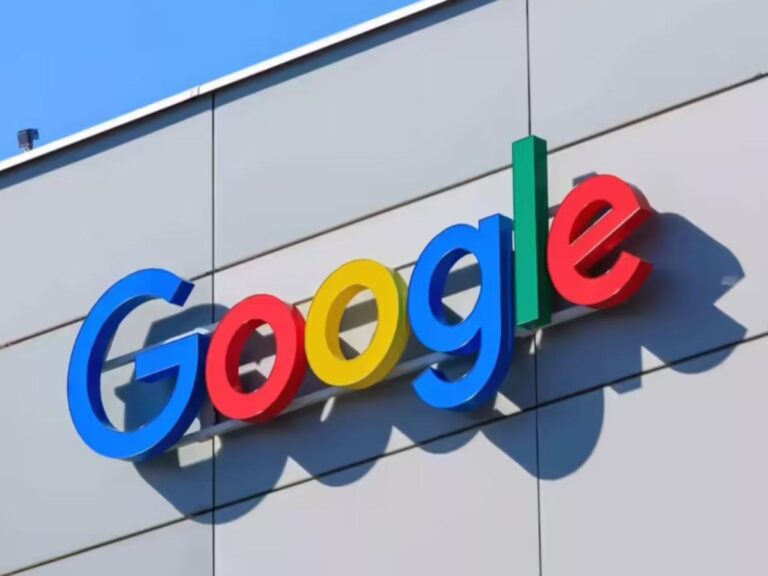In a new twist to the ongoing battle over Big Tech’s dominance, Google is once again under intense scrutiny as the U.S. government moves to dismantle its digital advertising empire. Echoing previous antitrust challenges, the latest legal action targets Google’s control over the online ad market, raising questions about competition, consumer choice, and the future structure of the digital economy. This development marks a significant escalation in Washington’s efforts to rein in the tech giant’s sprawling influence and reshape the rules governing digital advertising.
Google Faces Renewed Antitrust Pressure as US Targets Digital Advertising Dominance
In a fresh wave of regulatory scrutiny, Google’s dominance in the digital advertising sector is once again under the microscope. US authorities are considering aggressive measures to dismantle parts of the tech giant’s advertising operations, citing concerns over monopolistic practices that undermine competition and inflate prices for advertisers. Key issues focus on how Google controls the flow of ads through its extensive network, from ad creation to placement, creating barriers for smaller players and stifling innovation.
Key points driving the investigation include:
- Exclusive control over major ad platforms and exchanges
- Data advantages that limit competitors’ ability to compete fairly
- Opaque bidding processes that may disadvantage advertisers
- Allegations of tying ad services together to preserve market grip
| Aspect | Impact | Regulatory Concern |
|---|---|---|
| Market Share | Over 70% in digital ads | Monopoly power |
| Ad Tech Stack | Integrated services | Lack of competition |
| Data Access | Extensive user insights | Competitive disadvantage |
Examining the Impact of Google’s Advertising Practices on Market Competition
Google’s dominance in the digital advertising sector has once again drawn intense scrutiny from regulators aiming to curb monopolistic behaviors. The US Department of Justice alleges that Google’s integrated advertising services create unfair barriers for competitors, effectively stifling innovation and inflating prices for advertisers. Central to this investigation is Google’s control over key market components such as ad exchanges, supply-side platforms, and publisher tools, which critics argue allows the company to prioritize its own services while limiting transparency for advertisers and publishers alike.
Key concerns highlighted include:
- Exclusive contracts that restrict partnerships between publishers and alternative ad platforms
- Algorithmic biases that favor Google-owned ad inventory in auctions
- Opaque data-sharing practices that disadvantage smaller competitors
| Market Segment | Google’s Market Share | Competitor Presence |
|---|---|---|
| Ad Exchanges | 70% | Low |
| Supply-Side Platforms | 65% | Moderate |
| Demand-Side Platforms | 55% | Growing |
This renewed antitrust challenge echoes earlier cases against Google’s search dominance, highlighting a persistent pattern of leveraging market control to entrench digital monopolies. Industry analysts warn that any successful breakup of Google’s advertising business could reshape the landscape, fostering increased competition, greater diversity in ad tech solutions, and potentially lower costs for marketers and publishers worldwide.
Regulators Propose Structural Changes to Dismantle Google’s Advertising Ecosystem
The Federal Trade Commission and the Department of Justice have jointly unveiled a sweeping proposal aimed at overhauling the existing framework of Google’s advertising operations. The regulators argue that Google’s dominance in digital ad technology—spanning everything from ad buying platforms to data management—creates anti-competitive bottlenecks that hurt advertisers and publishers alike. Key aspects of the plan include:
- Separation of Google’s ad tech stack: forcing a split between its demand-side platform (DSP) and ad exchange.
- Restrictions on data use: limiting the ability to leverage user data acquired across multiple services for advertising advantages.
- Enhanced transparency mandates: requiring clearer disclosures on pricing and auction dynamics within the ad ecosystem.
Industry analysts warn that if implemented, these structural changes could disrupt nearly half of the US digital advertising market, reshaping relationships between buyers, sellers, and intermediaries. Below is a snapshot comparison of Google’s current advertising ecosystem versus the proposed model:
| Aspect | Current Model | Proposed Model |
|---|---|---|
| Ad Tech Integration | Fully integrated stack | Mandatory bifurcation |
| User Data Control | Consolidated across platforms | Restricted data pooling |
| Market Competition | Limited competitors | Increased access for rivals |
Industry Experts Recommend Enhanced Oversight and Increased Transparency for Digital Ads
Industry veterans emphasize the urgent need for stricter regulatory frameworks to govern the rapidly evolving digital advertising landscape. As scrutiny intensifies around dominant players, experts argue that only through enhanced governmental oversight can the market ensure fairness and protect consumer interests. Key recommendations include:
- Implementing comprehensive audits of ad algorithms and data usage
- Enforcing greater accountability for ad placement and targeting accuracy
- Mandating transparent disclosures on how user data influences ad pricing
Such measures aim to dismantle opaque practices that have allowed some platforms to monopolize digital ad revenues. Additionally, industry leaders call for collaborative efforts between regulators, advertisers, and tech companies to design a unified standard for transparency. This would empower advertisers with clearer insights into spending effectiveness and strengthen user trust across digital ecosystems.
| Recommendation | Expected Outcome |
|---|---|
| Regular Compliance Audits | Reduced manipulative ad practices |
| Transparent Data Usage Reports | Informed advertiser decisions |
| Standardized Disclosure Protocols | Improved user trust |
Concluding Remarks
As Google once again finds itself under intense antitrust scrutiny, the unfolding legal battle underscores the growing determination of U.S. regulators to challenge the dominance of tech giants in the digital advertising space. With potential structural changes on the horizon, the case not only highlights the complexities of regulating the rapidly evolving tech industry but also signals a broader shift toward increased accountability and competition. The outcome of this high-stakes dispute will be closely watched by stakeholders across the technology and advertising sectors, potentially reshaping the future landscape of digital commerce.




